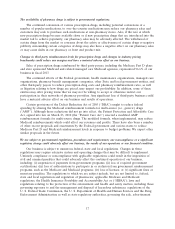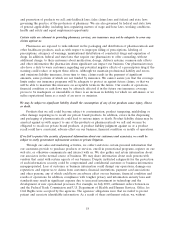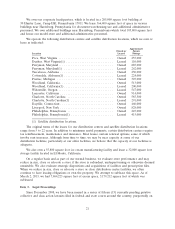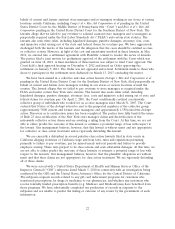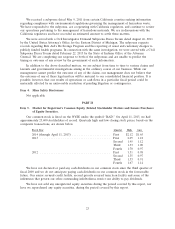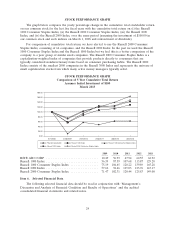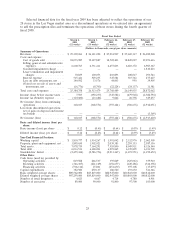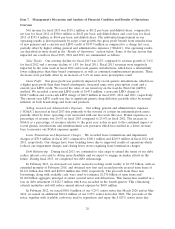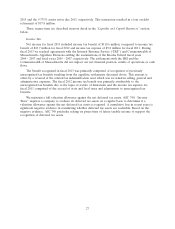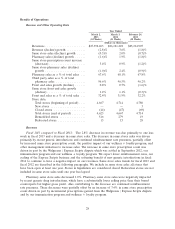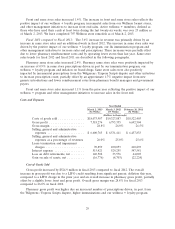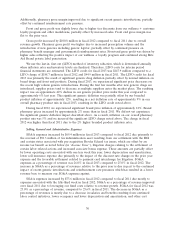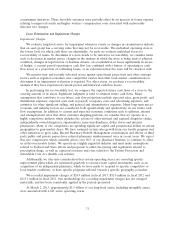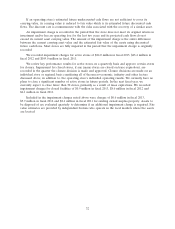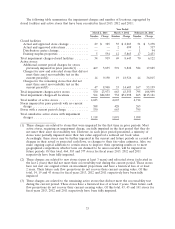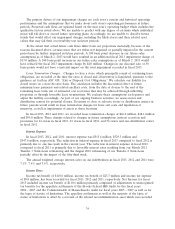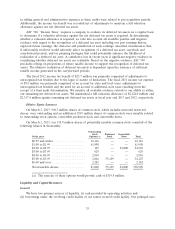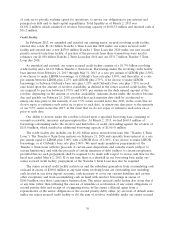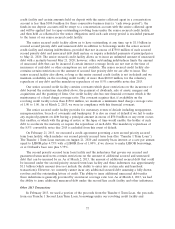Rite Aid 2013 Annual Report Download - page 28
Download and view the complete annual report
Please find page 28 of the 2013 Rite Aid annual report below. You can navigate through the pages in the report by either clicking on the pages listed below, or by using the keyword search tool below to find specific information within the annual report.2015 and the 9.375% senior notes due 2015, respectively. This transaction resulted in a loss on debt
retirement of $17.8 million.
These transactions are described in more detail in the ‘‘Liquidity and Capital Resources’’ section
below.
Income Tax:
Net income for fiscal 2013 included income tax benefit of $110.6 million, compared to income tax
benefit of $23.7 million for fiscal 2012 and income tax expense of $9.8 million for fiscal 2011. During
fiscal 2013 we reached agreements with the Internal Revenue Service (‘‘IRS’’) and Commonwealth of
Massachusetts Appellate Divisions settling the examinations of the Brooks Eckerd fiscal years
2004 - 2007 and fiscal years 2005 - 2007, respectively. The settlements with the IRS and the
Commonwealth of Massachusetts did not impact our net financial position, results of operations or cash
flows.
The benefit recognized in fiscal 2013 was primarily comprised of recognition of previously
unrecognized tax benefits resulting from the appellate settlements discussed above. This amount is
offset by a reversal of the related tax indemnification asset which was recorded in selling, general and
administrative expenses. The fiscal 2012 income tax benefit was primarily attributable to the
unrecognized tax benefits due to the lapse of statute of limitations and the income tax expense for
fiscal 2011 comprised of the accrual of state and local taxes and adjustments to unrecognized tax
benefits.
We maintain a full valuation allowance against the net deferred tax assets. ASC 740, ‘‘Income
Taxes’’ requires a company to evaluate its deferred tax assets on a regular basis to determine if a
valuation allowance against the net deferred tax assets is required. A cumulative loss in recent years is
significant negative evidence in considering whether deferred tax assets are realizable. Based on the
negative evidence, ASC 740 precludes relying on projections of future taxable income to support the
recognition of deferred tax assets.
27


